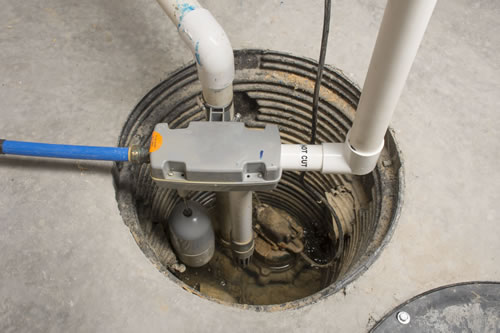Call This Friday to Get $50 Off Any service over $500
Do You Need a Local Plumber in Waco, TX?
Call us Now to Get $35 OFF.
Call This Friday to Get $50 Off Any service over $500
Do You Need a Local Plumber in Waco, TX?
Call us Now to Get $35 OFF.

A sump pump is a vital piece of equipment when it comes to protecting your home or business from the potential devastation of flooding. This unsung hero can prevent water damage in basements and low-lying areas, but many property owners opt to install a backup sump pump for additional peace of mind. In this article brought to you by Mr. Rooter Plumbing, we dive into the world of sump pumps, and we’ll provide you with step-by-step instructions on how to install a backup sump pump to fortify your defenses against flooding.
If you’d rather hire a uniformed plumber to handle the sump pump installation, then call Mr. Rooter Plumbing. We are happy to schedule a convenient appointment today. Mr. Rooter Plumbing is your source for reliable and affordable plumbing service in the area.
A sump pump is a device designed to remove excess water from basements, crawl spaces, and other areas prone to flooding. It is typically installed in a pit, known as a sump basin or sump pit, which collects water from the surrounding area. When the water in the pit reaches a certain level, the sump pump activates and pumps the water away from your property, thus preventing water damage and potential mold growth.

Sump pumps come in two primary types: submersible and pedestal. Submersible sump pumps are placed directly in the sump basin and are more discreet and quieter. Pedestal sump pumps, on the other hand, have their motor above the sump basin, making them easier to maintain but noisier.
While primary sump pumps are highly effective, they are not foolproof. Power outages, pump failures, or overwhelming water influx can compromise their efficiency. This is where a backup sump pump comes into play. Installing a backup sump pump provides an additional layer of defense against flooding, ensuring that your property remains protected in the event of any unforeseen circumstances.
Before you begin, make sure you have the necessary tools, parts, and materials:
Next, choose a location for the backup sump pump near your primary sump pump. It should be situated in a way that allows it to function effectively, preferably at a slightly higher level within the sump basin.
To prevent water from flowing back into the sump basin, install a check valve in the discharge pipe of your primary sump pump. Then, assemble the backup sump pump according to the manufacturer's instructions. Connect the backup pump to the check valve using PVC pipes and fittings. Make sure to use Teflon tape to seal all connections securely.
Depending on your chosen backup system, follow the manufacturer's guidelines to set up the power source. Battery-powered systems require periodic maintenance, so ensure they are charged and functioning correctly.
Once everything is in place, test the backup sump pump by pouring water into the sump basin or simulating a power outage. Verify that the backup pump activates as expected.
If you are having trouble with your sump pump installation, then call Mr. Rooter Plumbing to hire a uniformed plumber. Our team is on standby to take your call today.
Water leaks are an inevitable part of homeownership. As long as your plumbing components aren’t…
You probably don’t think about your drains until you encounter a backed-up drain line or…
The DIY culture, especially when it comes to plumbing installations, has done a number on…